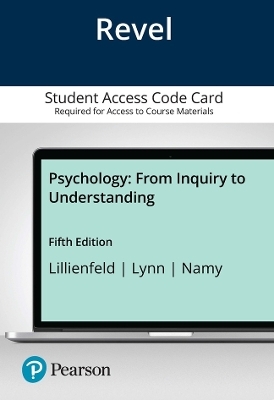
The Handbook of Children, Media and Development
Wiley-Blackwell (an imprint of John Wiley & Sons Ltd) (Hersteller)
978-1-4443-0275-2 (ISBN)
- Keine Verlagsinformationen verfügbar
- Artikel merken
The Handbook of Children, Media and Development brings together an interdisciplinary group of experts in the fields of developmental psychology, developmental science, communication, and medicine to provide an authoritative, comprehensive look at the empirical research on media and media policies within the field. 25 newly-commissioned essays bring new research to the forefront, especially on digital media, developmental research, and public policy debates Includes helpful introductions to each section, a theoretical overview of the field, and a final chapter that offers a vision of future research Contributors include key, international authorities in the field
Sandra L. Calvert , the Director of the Children's Digital Media Center, is a Professor of Psychology at Georgetown University. A fellow of the American Psychological Association, she has consulted for Nickelodeon Online, Sesame Workplace, Blue's Clues, and Sega of America, to influence the development of children's television programs, Internet software, and video games. She is author of Children's Journeys through the Information Age (1999), and co-editor of Children in the Digital Age: Influences of Electronic Media on Development (2002). Barbara J. Wilson is a Professor and Head of the Department of Speech Communication at the University of Illinois at Urbana-Champaign. She is co-author of Children, Adolescents, and the Media (2002) and three book volumes of the National Television Violence Study (1997-1998).
Notes on Editors and Contributors. Foreword: Aletha C. Huston: (University of Texas at Austin). Introduction: Media and Children's Development: Sandra L. Calvert (Georgetown University), Barbara J. Wilson (University of Illinois at Urbana-Champaign). Part I: Historical, Conceptual, and Financial Underpinnings of Media: . 1. Historical and Recurring Concerns about Children's Use of the Mass Media: Ellen Wartella (University of California, Riverside), Michael Robb (University of California, Riverside). 2. Business Models for Children's Media: Alice Cahn (Cartoon Network), Terry Kalagian (Kalagian Productions), Catherine Lyon (Children's Media Development Consultant). Part II: Media Access and Differential Use Patterns: . 3. Media Use Across Childhood: Access, Time, and Content: Ronda Scantlin (University of Dayton). 4. Children, Race, Ethnicity, and Media: Bradley S. Greenberg (Michigan State University), Dana E. Mastro (University of Arizona). 5. Gender, Media Use, and Effects: Stacey J. T. Hust (Washington State University), Jane D. Brown (University of North Carolina at Chapel Hill). 6. Media and the Family: Alison Alexander (University of Georgia). Part III: Cognitive Effects of Media: How and What Children Learn: . 7. Attention and Learning from Media during Infancy and Early Childhood: Rachel Barr (Georgetown University). 8. Media Symbol Systems and Cognitive Processes: Kaveri Subrahmanyam (California State University), Patricia Greenfield (University of California, Los Angeles). 9. Learning from Educational Media: Heather L. Kirkorian (University of Massachusetts), Daniel R. Anderson (University of Massachusetts). 10. News, Reality Shows, and Children's Fears: Examining Content Patterns, Theories, and Negative Effects: Stacy L. Smith (University of Southern California), Katherine M. Pieper (University of Southern California), Emily J. Moyer-Guse (University of California, Santa Barbara). Part IV: Social Effects of Media: . 11. Media Violence and Aggression in Youth: Barbara J. Wilson (University of Illinois at Urbana-Champaign). 12. Prosocial Effects of Media Exposure: Marie-Louise Mares (University of Wisconsin-Madison), Edward Palmer (Davidson College), Tia Sullivan (Riley Institute's Center for Education Policy and Leadership). 13. Make-Believe Play, Imagination, and Creativity: Links to Children's Media Exposure: Dorothy G. Singer (Yale University), Jerome L. Singer (Yale University). 14. Parasocial and Online Social Relationships: Cynthia Hoffner (Georgia State University). 15. Fear Responses to Media Entertainment: Patti M. Valkenburg (University of Amsterdam), Moniek Buijzen (University of Amsterdam). Part V: Health Effects of Media: . 16. Media Use and Childhood Obesity: Elizabeth A. Vandewater (University of Texas at Austin), Hope M. Cummings (University of Michigan). 17. Media, Body Image, and Eating Disorders: Kristen Harrison (University of Wisconsin-Madison), Veronica Hefner (University of Illinois at Urbana-Champaign). 18. Media and Advertising Effects: Brian Young (University of Exeter). 19. Adolescents and Media Messages about Tobacco, Alcohol, and Drugs: Dina L. G. Borzekowski (Johns Hopkins Bloomberg School of Public Health), Victor C. Strasburger (University of New Mexico School of Medicine). Part VI: Media Policy and Interventions: . 20. The Children's Television Act: Sandra L. Calvert (Georgetown University). 21. Regulating the Media: Sexually Explicit Content: Joah G. Iannotta (US Government Accountability Office). 22. Media-Related Policies of Professional Health Organizations: Marie Evans Schmidt (University of Massachusetts), David S. Bickham (University of Texas at Austin), Amy Branner (Children's Media Use Study), Michael Rich (Children's Hospital Boston). 23. The Rating Systems for Media Products: Douglas A. Gentile (Iowa State University). 24. Parent and School Interventions: Mediation and Media Literacy: Jennifer L. Chakroff (Ohio State University), Amy I. Nathanson (Ohio State University). Author Index. Subject Index
| Erscheint lt. Verlag | 23.2.2009 |
|---|---|
| Verlagsort | Chicester |
| Sprache | englisch |
| Maße | 185 x 257 mm |
| Gewicht | 1276 g |
| Themenwelt | Geisteswissenschaften ► Psychologie |
| Sozialwissenschaften | |
| ISBN-10 | 1-4443-0275-2 / 1444302752 |
| ISBN-13 | 978-1-4443-0275-2 / 9781444302752 |
| Zustand | Neuware |
| Haben Sie eine Frage zum Produkt? |
aus dem Bereich
